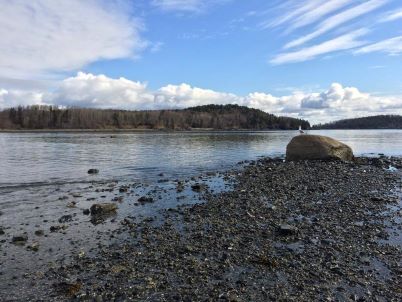Last updated: November 4, 2022
Lesson Plan
Outdoor Classroom: Weather K-2

- Grade Level:
- Lower Elementary: Pre-Kindergarten through Second Grade
- Subject:
- Science
- Lesson Duration:
- 30 Minutes
- Additional Standards:
- Next Generation Science Standards
K-PS3-2. Use tools and materials to design and build a structure that will reduce the warming effect of sunlight on an area.
ESS2.D
Weather is the combination of sunlight, wind, snow or rain, and temperatures - Thinking Skills:
- Understanding: Understand the main idea of material heard, viewed, or read. Interpret or summarize the ideas in own words. Applying: Apply an abstract idea in a concrete situation to solve a problem or relate it to a prior experience. Analyzing: Break down a concept or idea into parts and show the relationships among the parts. Creating: Bring together parts (elements, compounds) of knowledge to form a whole and build relationships for NEW situations.
Essential Question
-What factors determine weather and what makes it science?
-How does wind connect to erosion?
-How does wind impact the land?
-What changes can happen to a drop of water when falling from the sky?
-What if meteorology did not tell you the weather?
Objective
-Students will be able to define types of weather.
-Students will be able to use tools to measure weather.
-Students can make predictions about forecasts and weather.
Background
Weather awaits you every day!
This unit introduces K-2 students to the concept of weather and how it influences their lives and the communities around them. Using tools, students observe, discuss, measure, record, data on wind, precipitation and temperature. They learn how to read a thermometer. They also look at clouds and use a wind scale to estimate wind speed as well as create a rain gauge to measure precipitation. To practice their new skills and knowledge students compare their own weather predictions with an actual weather forecast and use the weather data they have collected to develop generalizations in their own area.
Why include outdoor study?
Outdoor learning has huge benefits for both students and teachers. Taking the classroom outdoors provides students with many hands-on experiences, challenges them to work with peers effectively and offers many teachable moments in regards to sustainability.
Preparation
Materials
The student will explore the concept of weather. The student will identify types of weather (e.g., snowy, rainy, cloudy, sunny, windy, stormy, etc.) The student will develop an understanding of classification by sorting weather picture cards.
Students will share what they know about the Sun by exploring images of the Sun.
Download What do we know about the sun?
This lesson introduces students to how a thermometer works. Children know if something is hot or cold. From an early age, they are told not to touch a hot stove and to wear a coat when it's cold outside. This understanding of temperature is a good starting point to teach the differences in temperature.
Download The Sun and Temperature
Students will identify the four seasons and recognize the seasonal weather patterns.
The goal is to get students to focus on the effects of wind they can observe on an object.
Students will be able to: Describe what wind is and how the wind affects us. Name some types of wind and describe erosion.
Download Wind's Power and Erosion
Procedure
Each lesson will require a variety of prep, from props to pictures. Each lesson is about 30 minutes in length and can be done as stand alone lessons or as a unit.
